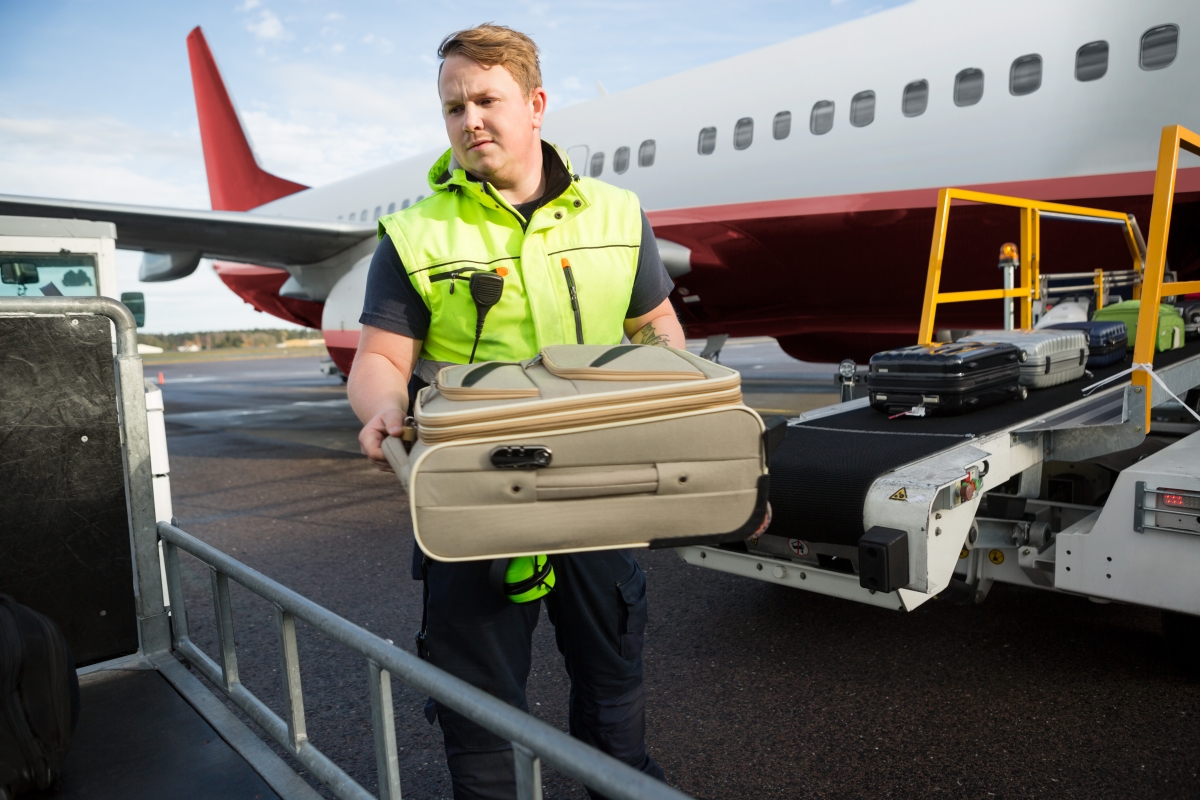Career Overview
Air transport ramp attendants operate ramp-servicing vehicles and equipment, handle cargo and baggage and perform other ground support duties at airports. They are employed by airline and air services companies and the federal government.
Job Titles
Duties
Air transport ramp attendants perform some or all of the following duties:
- Drive and operate ramp-servicing vehicles and equipment such as towing tractors, food service trucks, de-icer sprayers and lavatory servicing trucks
- Position passenger loading stairs and operate aircraft cargo doors
- Marshal or tow aircrafts to gate positions for passenger boarding and deplaning and for loading and unloading of cargo
- Sort and load cargo and passenger baggage according to instructions forwarded by load planner for proper balance
- Unload, sort and route cargo and baggage
- Transport freight between aircraft and airport warehouse
- Clean and prepare aircraft interior for passengers and wash aircraft exterior
Earnings
Earnings is income that workers receive in exchange for their labour. Depending on the type of employment, earnings can be in the form of wages (hourly), salaries (fixed monthly or annual) or self-employed earnings.
Work Environment
# Workers Employed
1,250% Employed Full Time
42%Key aspects of the work in this occupation:
- Work takes place outdoors in various weather conditions
- Workers use various types of service vehicles and equipment
- The workplace may be noisy enough to affect hearing
Career Pathways
There is movement among jobs in this group.
Related Careers
Occupational Interests
It’s important to understand what kinds of occupations align with your interests.
For more about occupational interests visit Skills for the Future Workforce > Characteristics.
Here are the top occupational interest(s) for this career profile:
Education, Training and Skills
- Completion of secondary school is usually required
- Experience operating baggage transporting equipment or warehouse experience may be required
- A driver's licence and a good driving record are usually required
Education programs in B.C.
The following program areas are related to this occupation:
- Academic/Basic Upgrading

Skills
Every job calls for a certain set of skills. Knowing those skills is the first step in finding a good career fit.
Here, you will find the 10 most relevant workplace skills. Some are more important to achieving success in a certain career than others. These skills may come naturally to you or you may need to gain them through education, training and experience.
See the list of work-related skills below, ranked in order of importance for this career. Check out the list and see if this career matches your skills—take that first step!
Talking to others to share information effectively.
Giving full attention to what other people are saying, taking time to understand the points being made, asking questions as appropriate, and not interrupting at inappropriate times.
Using logic and reasoning to identify the strengths and weaknesses of alternative solutions, conclusions or approaches to problems.
Managing one’s own time and the time of others.
Adjusting actions in relation to others' actions.
Keeping track of and assessing your performance, other individuals, or organizations to make improvements or take corrective action.
Motivating, developing and directing people as they work, and identifying the best people for the job.
Understanding written sentences and paragraphs in work-related documents.
Considering the relative costs and benefits of potential actions to choose the most appropriate one.
Being aware of others’ reactions and understanding why they react as they do.
Labour Market Statistics
Discover data, facts and information that have been gathered and analyzed. Learn about the characteristics of the economy and labour market in B.C.
Employment
Find out about employment types and trends by region and industry.
Employment
1,250Employment by Region







| Region | Employment | % Employment of this Occupation |
|---|---|---|
| Cariboo | 20 | 1.6% |
| Kootenay | 10 | 0.8% |
| Mainland/Southwest | 1,000 | 79.7% |
| North Coast and Nechako | 25 | 2.0% |
| Northeast | 0 | 0.0% |
| Thompson-Okanagan | 55 | 4.4% |
| Vancouver Island/Coast | 140 | 11.2% |
Labour Market Outlook
The B.C. Labour Market Outlook is a 10-year forecast of the expected supply and demand for labour in the province. It’s usually updated every year. The purpose is to provide British Columbians with the knowledge to make informed decisions on careers, skills training, education and hiring.
Forecasted Job Openings (2024-2034)
850Forecasted Job Openings
Forecasted Employment Growth Rate
Composition of Job Openings
Job Openings by Region (2024-2034)







| Region | Job Openings | Avg. Annual Employment Growth |
|---|---|---|
| Cariboo | 10 | 0.8% |
| Kootenay | Not available | Not available |
| Mainland/Southwest | 740 | 1.2% |
| North Coast and Nechako | 30 | 2.4% |
| Northeast | Not available | Not available |
| Thompson-Okanagan | 20 | 0.7% |
| Vancouver Island/Coast | 60 | 1.3% |
Industry Highlights
Learn about the opportunities in B.C.'s major industries, including employment trends, earning potential, locations of work and more.
Forecasted Job Openings by Industry
| Industry | Job Openings (2024-2034) |
|---|---|
| Transportation and Warehousing | 820 |
| Business, Building and Other Support Services | 10 |
| Construction | 10 |
| Retail Trade | 10 |
Resources
Resource information is currently not available.







